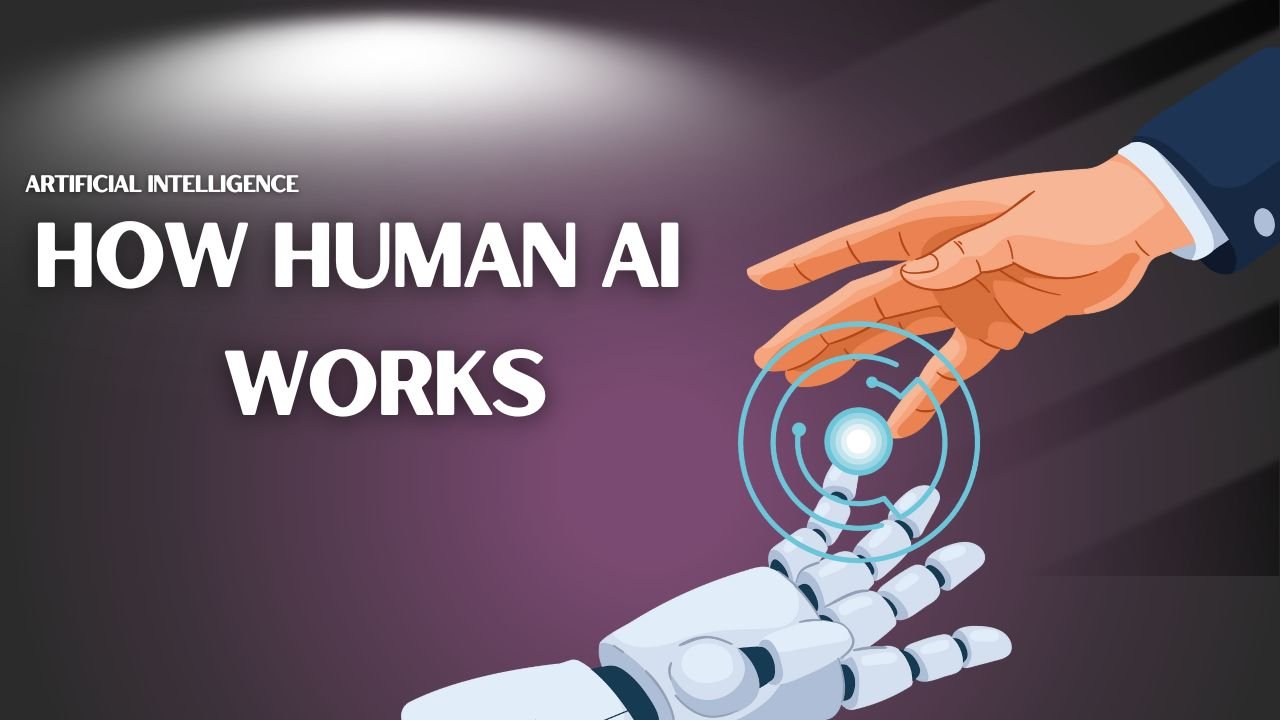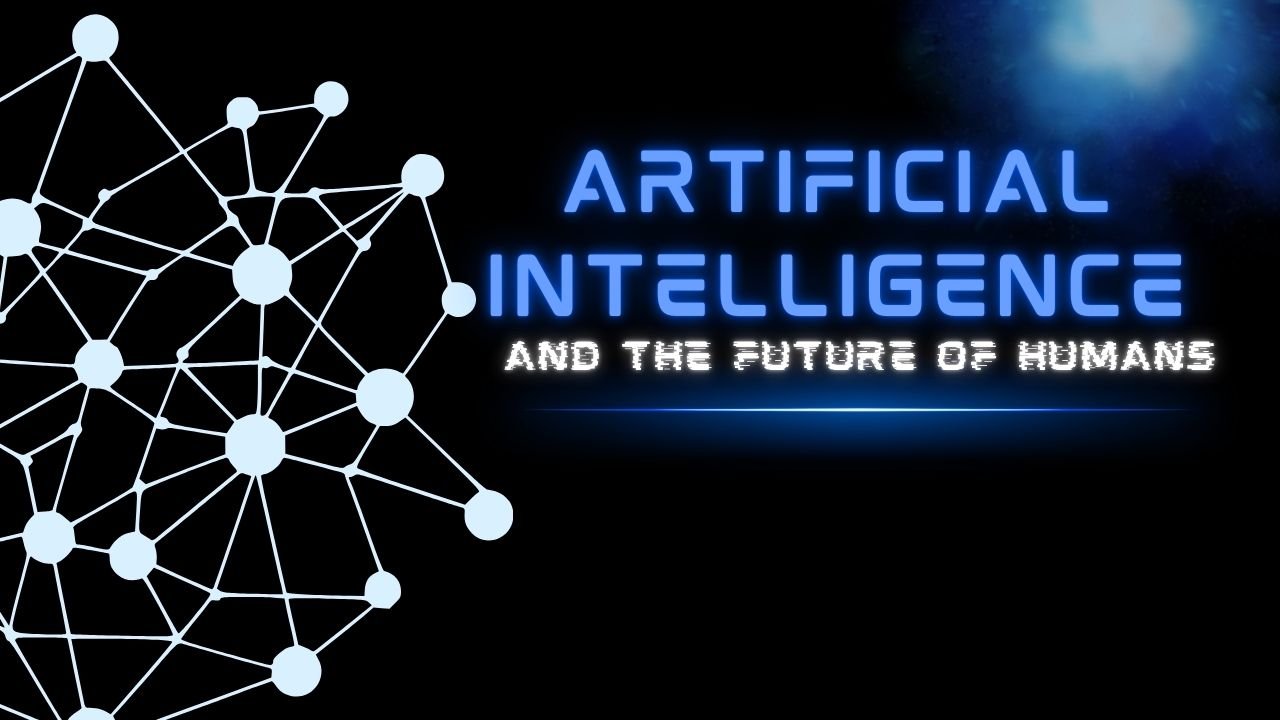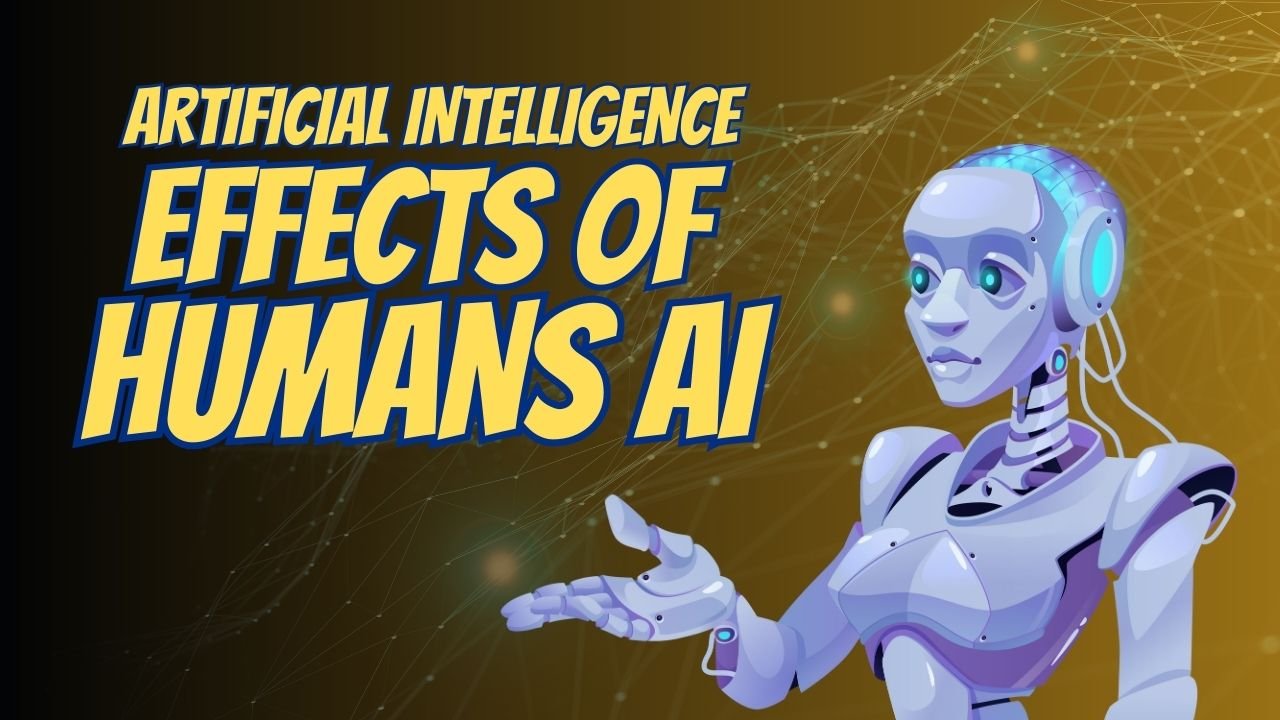How Human AI Works: A Complete Understanding To Artificial Intelligence and Human Interaction
Introduction
Artificial intelligence (AI) is not a futuristic idea anymore. Artificial Intelligence has revealed itself as an important aspect in our lives. The term “Human AI” describes the relations and connections between artificial intelligence and human beings. This interplay influences the design and implementation of AI tools ranging from virtual assistants, AI bots, and sophisticated analytics platforms. Knowledge of Human AI gives the idea regarding how these AI systems are developed to copy, comprehend and finally respond to human actions.
In this overview, we will discuss what Human AI is, discuss the base principles, talk about the core technologies of such systems, and discuss the applications as well as the implications of the technologies. This guide will be useful for technology lovers and businessperson as well as for people who are interested in how artificial intelligence changes our lives and change the environment.
What is Human AI?
Human AI comprises the science and technology of artificial intelligence interfaces that conform to human interaction paradigms. It refers to the ability to train artificial intelligent models and algorithms that can identify, comprehend, and interpret human inputs in form of text, voice or otherwise. Human AI’s aim is to make such interactions as natural and efficient as possible in order to enhance the utility.

The Fundamentals of Human AI
1. Natural Language Processing (NLP):
Natural Language Processing is major part of Human AI, because it helps to the machines to read and write the human language. It involves several key tasks:
- Text Analysis: Represented between the organization of text and the concepts that the text contains.
- Sentiment Analysis: Intention behind using certain words and identify the emotions linked with it.
- Machine Translation: Interpreting one language is in another to provide a written or spoken text.
- Speech Recognition: Speech to text is the process of transcribing spoken words into the written language format.
NLP enables an AI system to understand and answer a user’s query in a fluent and natural manner.
2. Machine Learning (ML):
Artificial Intelligence is further classified into Machine Learning. Machine Learning is a process of training the algorithms to make a particular decision based on the given data. It is good to know that ML models become much better with time, and as more data is given to the model, the more relevant responses are given. Key techniques in ML include:
- Supervised Learning: Supervised learning of training models using targeted data.
- Unsupervised Learning: Discovering relationships between variables and grouping in unstructured data.
- Reinforcement Learning: Training models, that involves exposing a model to a task or a problem and letting it learn through trial and error to reach a given objective.
3. Computer Vision:
Computer Vision is the branch of Artificial Intelligence that provides systems the ability to collect meaning from visuals from the world. It includes:
- Image Recognition: Finding objects and characteristic features in pictures.
- Detection Of Object: It categorized the objects in visual data.
- Facial Recognition: Facial recognition as a process of identification and or authentication of people.
These capabilities enable the AI systems to use icons and symbols to engage with the user and the experience is advanced.
4. Human Computer Interaction:
Human Computer Interaction is related to the utilitarian use of computers and computer technology with specific regards to how the human being interfaces with computers. In regards to the Human AI the ‘Human Computer Interaction’ guidelines are used to develop interfaces which are easy to interact with. This includes:
- Usability: One of them is making sure that, it is easy to use and comprehend with the new AI systems that are being put in place.
- Accessibility: How to ensure that users with disabilities gain access to AI tools.
- User Experience (UX) Design: Designing and developing human AI communication experiences that are interesting and optimally productive.
In Technologies and Applications How Human AI Works
Human AI involves the use of multiple sophisticated technologies which interact to deliver smooth communication. In the following section, we present the major technologies and some of the uses associated with them.
1. This paper aims at demonstrating how Natural Language Processing (NLP) works.
NLP allows AI systems to comprehend and interact with people’s language. Here’s how it works:
- Data Collection: AI systems collect massive text data from different sources including books, articles and even social media platforms.
- Preprocessing: The data that was collected is preprocessed to make it ready for further analysis which involves the following steps: tokenization and normalization.
- Model Training: The preprocessed data are used to train the NLP models so that they are able to learn language patterns and semantics.
- Inference: The models when trained, can take new text inputs, generate responses and can perform tasks such as translation as well as sentiment analysis.
Some of the use of NLP are in developing chatbots, virtual assistants such as Siri in Iphone, Alexa in Android and in translation services.
2. An Algorithm Of Machine Learning
Machine Learning algorithms are used to find a solution based on given data to make appropriate predictions or decisions. Here’s how they function:

- Data Input: Machine learning model accept raw data input where data can be textual data, images or numeral data.
- Feature Extraction: It involves determining important features or characteristics which are utilised to train the model.
- Model Training: It is a data learning model that will help to identify patterns and relationships from the data.
- Evaluation: Test data is helped in which have to be used to evaluate the performance of the model.
- Deployment: After training the model is used for prediction or any other task in the actual problems.
Some of the applications of ML are recommendation systems (e. g. Netflix, Amazon), fraud detection, and prediction.
3. Computer Vision for Interaction Improvement
Computer Vision is one of the most functionalities of AI systems that allows these systems to interpret information that is in the form of visuals. Here’s how it works:
- Image Acquisition: Capturing devices are used to record images such as cameras or sensors record video images.
- Preprocessing: The pre processing of the visual data first to improve its quality and to make it ready for analysis.
- Feature Extraction: Edges, texture and shapes in the images are considered as the key features.
- Object Recognition: The functioning of the AI system is to categorize the objects depending on the recognized features.
- Action: Depending on the identified objects, it is possible to give advice or send notifications concerning the results of the analysis of the picture.
Computer Vision has its uses in various fields such as; Facial recognition systems, Self-driving cars, and Augmented reality.
4. Human Computer Interaction Design
This paper shows that, the value of Human Computer Interaction principles to facilitate AI designs at the central point in effective and efficient interactions. Here’s how Human Computer Interaction is applied:
- Interface Design: Designing interfaces that allow users to easily communicate with AI based systems and products.
- User Feedback: Taking into account the users’ responses in order to modify and advance the AI contacts.
- Accessibility Features: Designing AI systems that can gear them to the users with different abilities.
- User Testing: User testing where one observes problems that users have in the AI system and how these can be solved.
Human Computer Interaction design is important in the design of artificial intelligence, smart assistant, customer relations and intelligent kiosks.
The Effects of Human AI in the Different Fields

AI is becoming human and is finding its way into several sectors through the improvement of efficiency, customer relations and innovation. For this purpose, we look at some of the major areas that are impacted by Human AI.
1. Healthcare
In healthcare, Human AI is improving patient care and operational efficiency through various points.
- Medical Diagnosis: They use medical images and patient information to help in the diagnosis of diseases and other disorders.
- Personalized Medicine: AI solutions are used to study patient’s genetic profile and health status and choose the appropriate therapies, including medications.
- Administrative Tasks: AI solutions help to minimize time-consuming clerical activities like appointment making and documentation leaving less work for humans.
2. Retail
In the retail sector, Human AI grow business and customer experiences and drives sales.
- Personalized Recommendations: Machine learning predicts customer’s activity, and therefore, offers relevant products to the customer.
- Customer Service: Self-service technologies can include using artificial intelligence in the form of chatbots and virtual assistants to address customers’ concerns and questions.
- Inventory Management: They have the capability of forecasting demands, and this helps them to avoid situations whereby they order fewer products or too many that result in stockouts or overstocking respectively.
3. Finance
Human AI is revolutionizing the finance industry by:
- Fraud Detection: AI algorithms identify fraud in transactions and activities through the identification of irregularities of the financial data.
- Algorithmic Trading: AI models of predictive analysis of the market and the indication of trades happening at high speed, thus improving the investment strategies.
- Customer Insights: Based on the customer data, the AI tools that are being used are in a position to offer recommendation on the financial products and services.
4. Education
In education, Human AI enhances learning experiences through.
- Personalized Learning: AI systems also change the educational content and material as per the learning experience of the students and help them to follow the specific learning paths.
- Automated Grading: Using the AI programmes, assignments are marked and feedback is given to the students sparing the educators a lot of time.
- Virtual Classrooms: Smart virtual assistants help children continue learning from home by responding to questions.
Ethical Considerations and Challenges
As Human AI continues to advance, several ethical considerations and challenges must be addressed.
1. Privacy Concerns
A significant number of applications of AI systems imply the processing of personal data. One of the significant challenges that the owners of such data face is to guarantee the confidentiality and security of this information to protect users’ rights and follow the legal requirements.
2. Bias and Fairness
Machine learning has its shortcoming as the AI systems will continue to reflect the bias data fed to the system. There is a need to put measures that would help in avoiding discriminations in order to achieve fairness in the systems.
3. Transparency and Accountability
The decision making of the system which is an important part of AI is very often difficult to explain and understand. This is to ensure that there is accountability in the implementation of the various activities as well as prevent or handle the arising of any problem.
4. Impact on Employment
This means that through the use of AI in tasks, there might be an effect on employment, thus causing worries on job losses. Consequently, it is necessary to evaluate social and economic consequences and identify the possibilities of retraining and further education.
Conclusion
It is crucial to comprehend how Human AI operates since artificial intelligence’s environment is constantly changing. It’s time to take a look at the technologies behind Human AI or how Human AI is revolutionizing industries and improving users’ experiences by implementing natural language processing and machine learning, computer vision, and human-computer interactions.
As we begin to incorporate Artificial Intelligence into different sectors of our daily existence, ethical issue and concerns that surround it will have to be met to avoid adverse impacts. Therefore, by following Human AI, one can optimize the use of artificial intelligence in producing solutions and enhance human relation with technologies.
F.A.Qs
1. What is Human AI?
In this project, Human AI means the processes including artificial intelligence and people’s participation. It entails the development of AI models that possess reasonable comprehension of the inputs provided by humans and reasonable response to the same.
2. What are the key applications of Machine Learning in Human AI?
Some of the Artificial Intelligence in Human AI is in recommendation system, fraud detection, analytics and personalization. An ML model uses data to make responses that are proper and pertinent.
3. What challenges are associated with Human AI development?
Challenges include ensuring data privacy, mitigating biases, maintaining transparency, and addressing the impact on employment. These challenges require careful consideration and proactive solutions.
